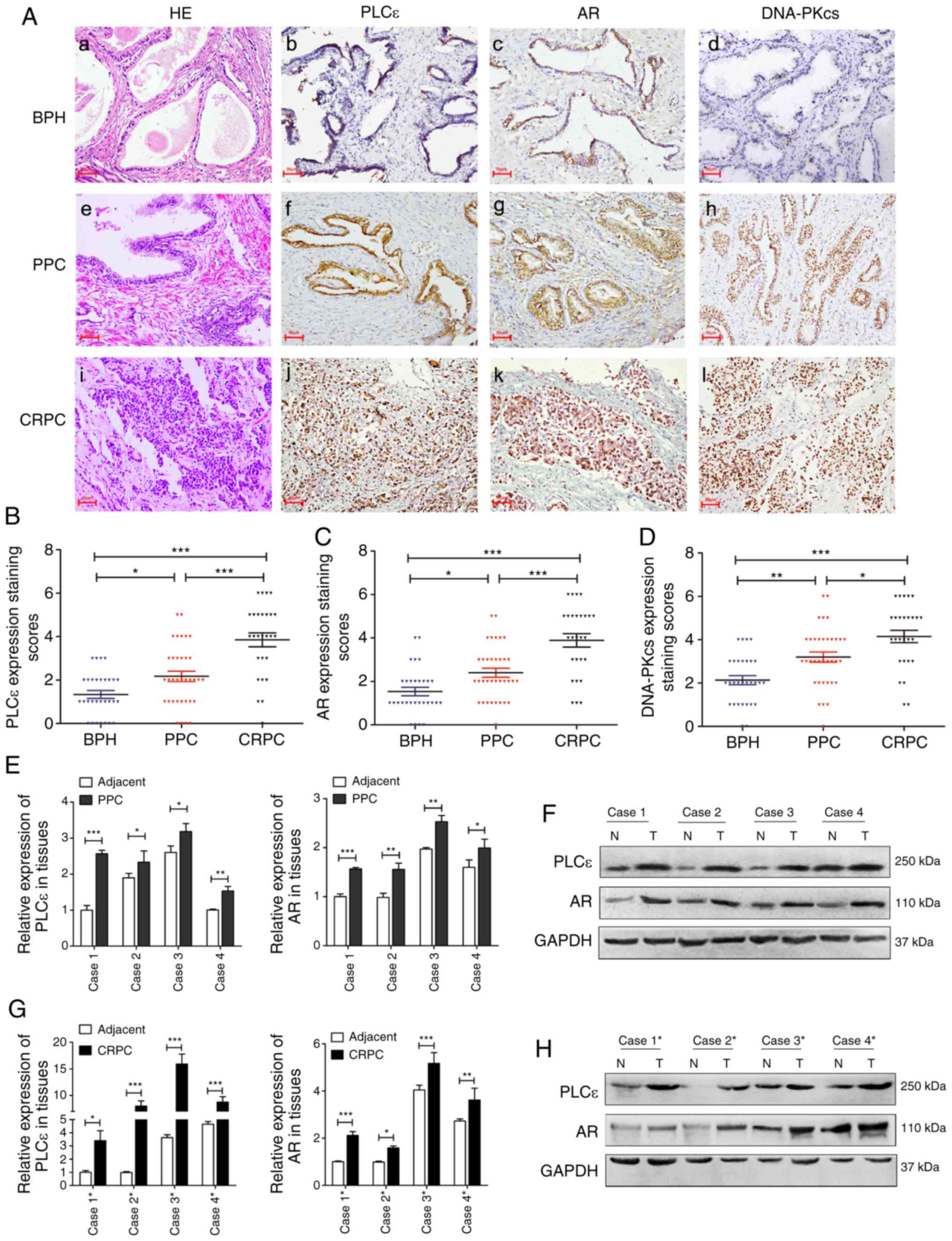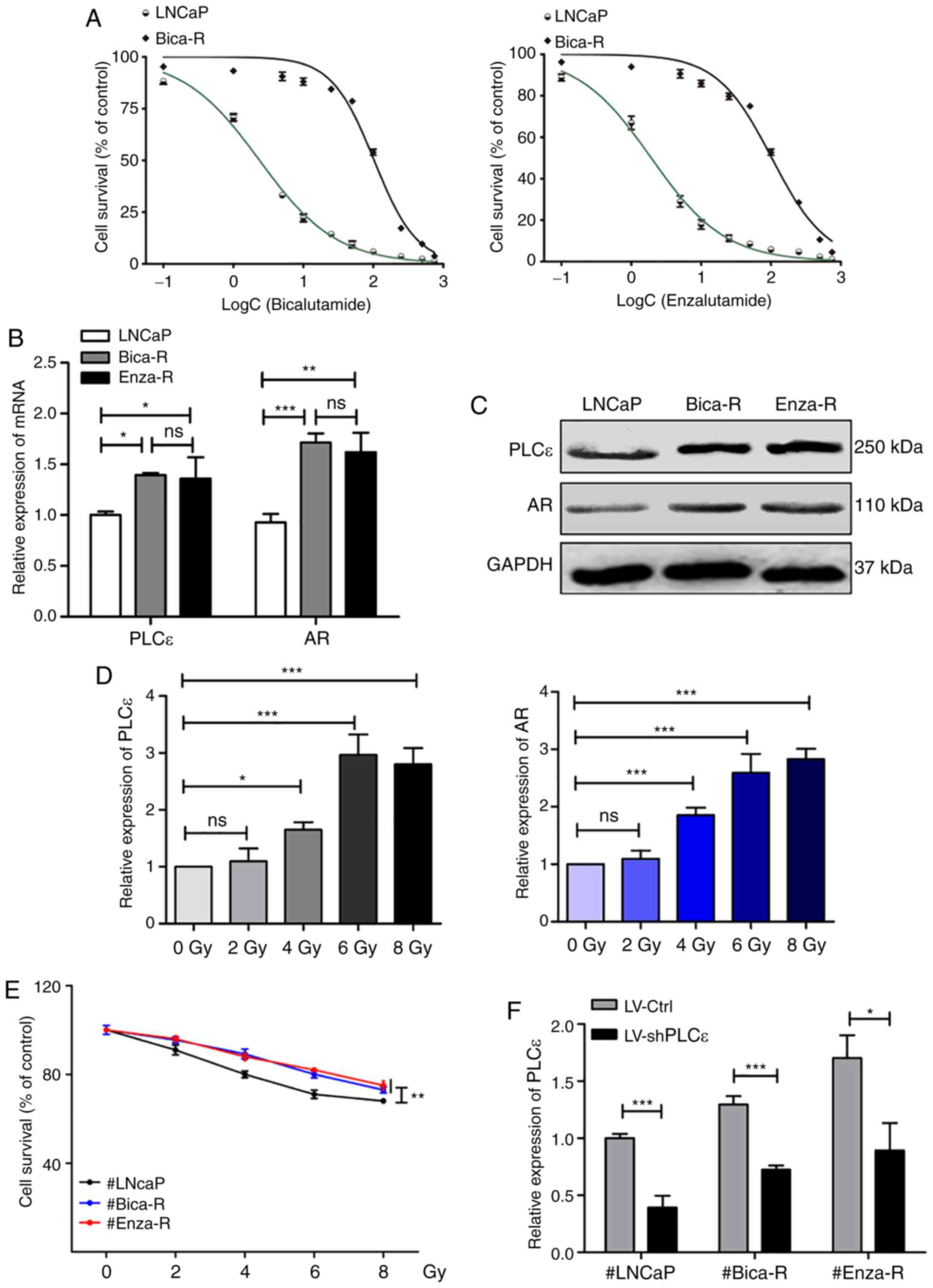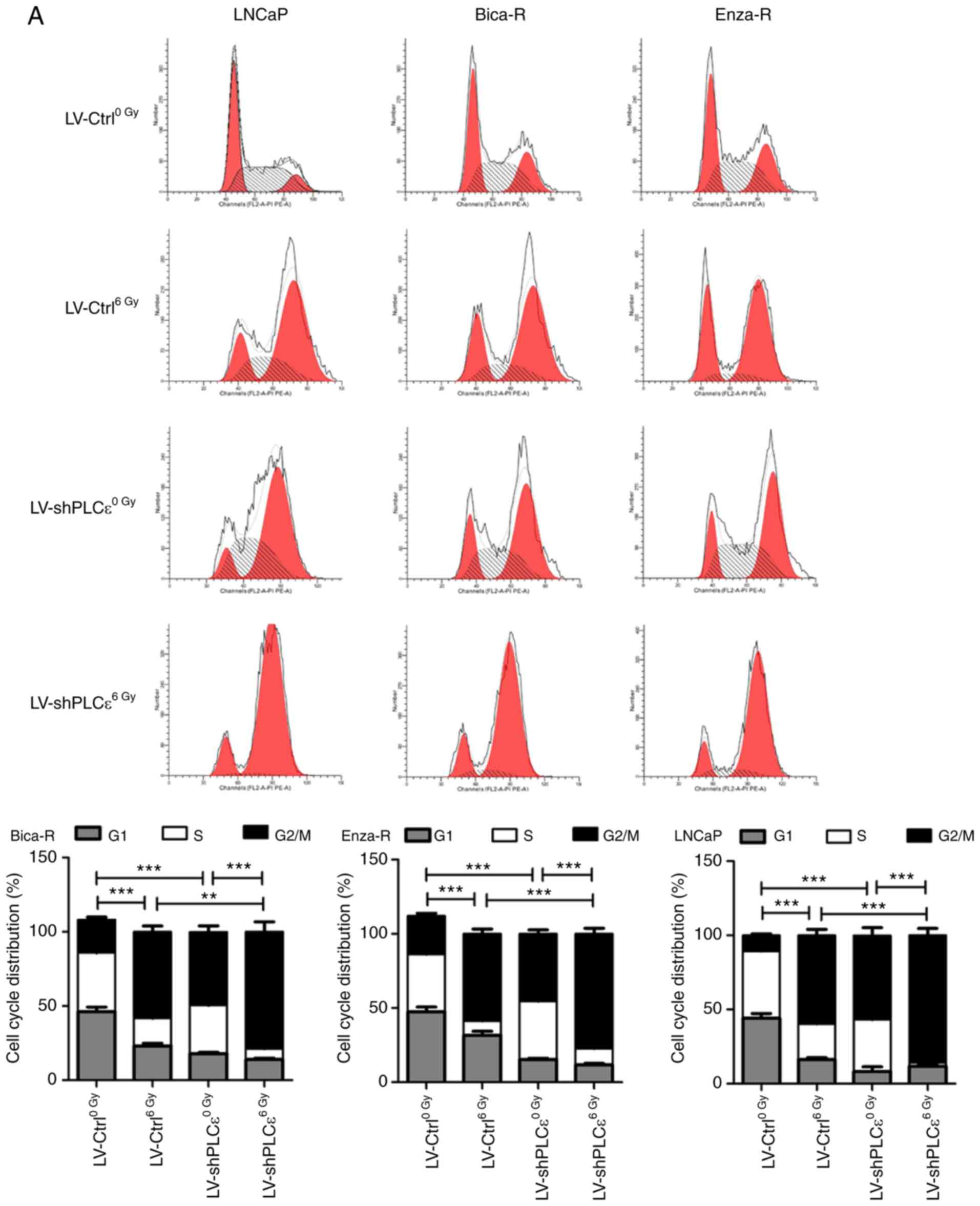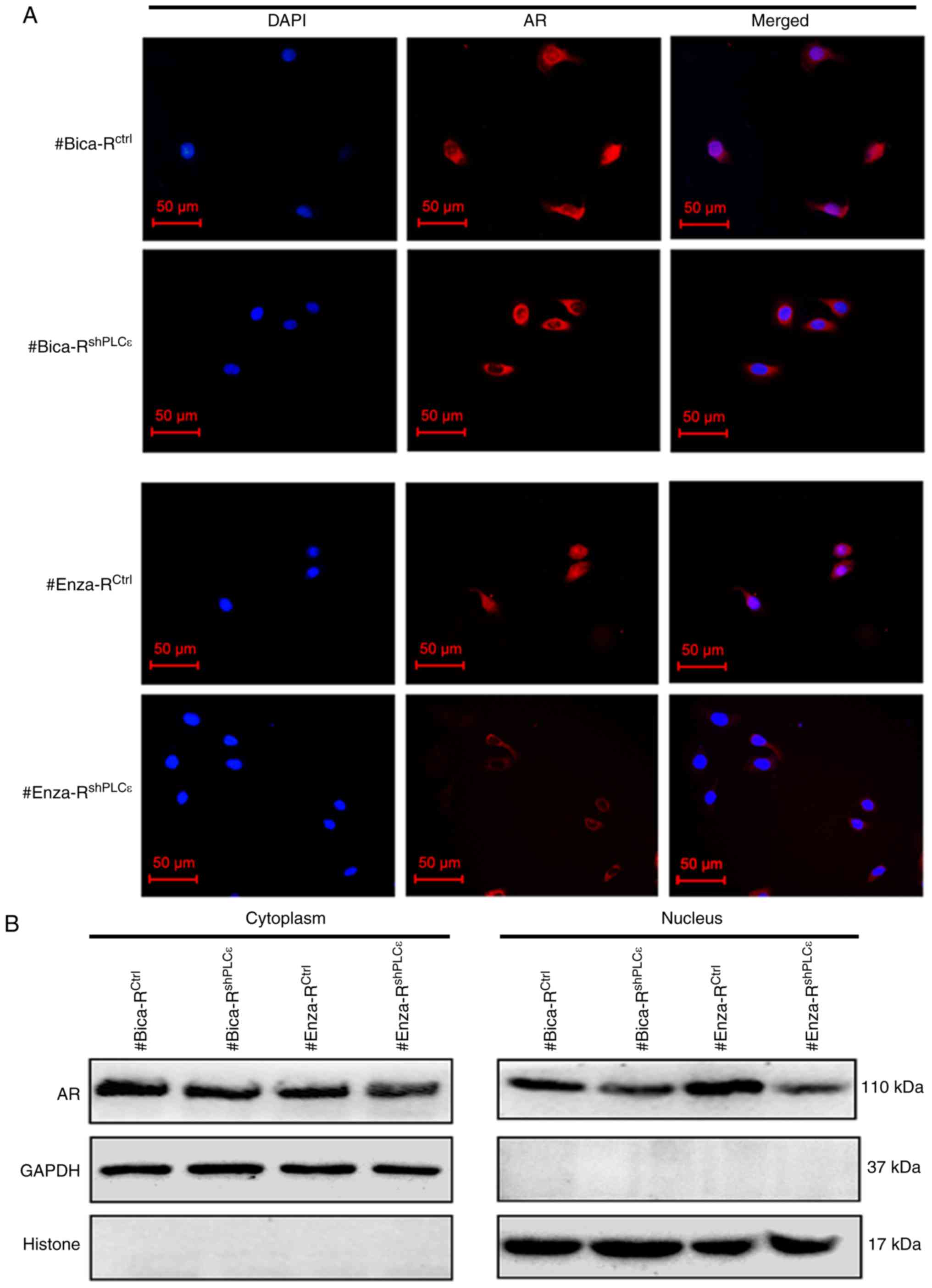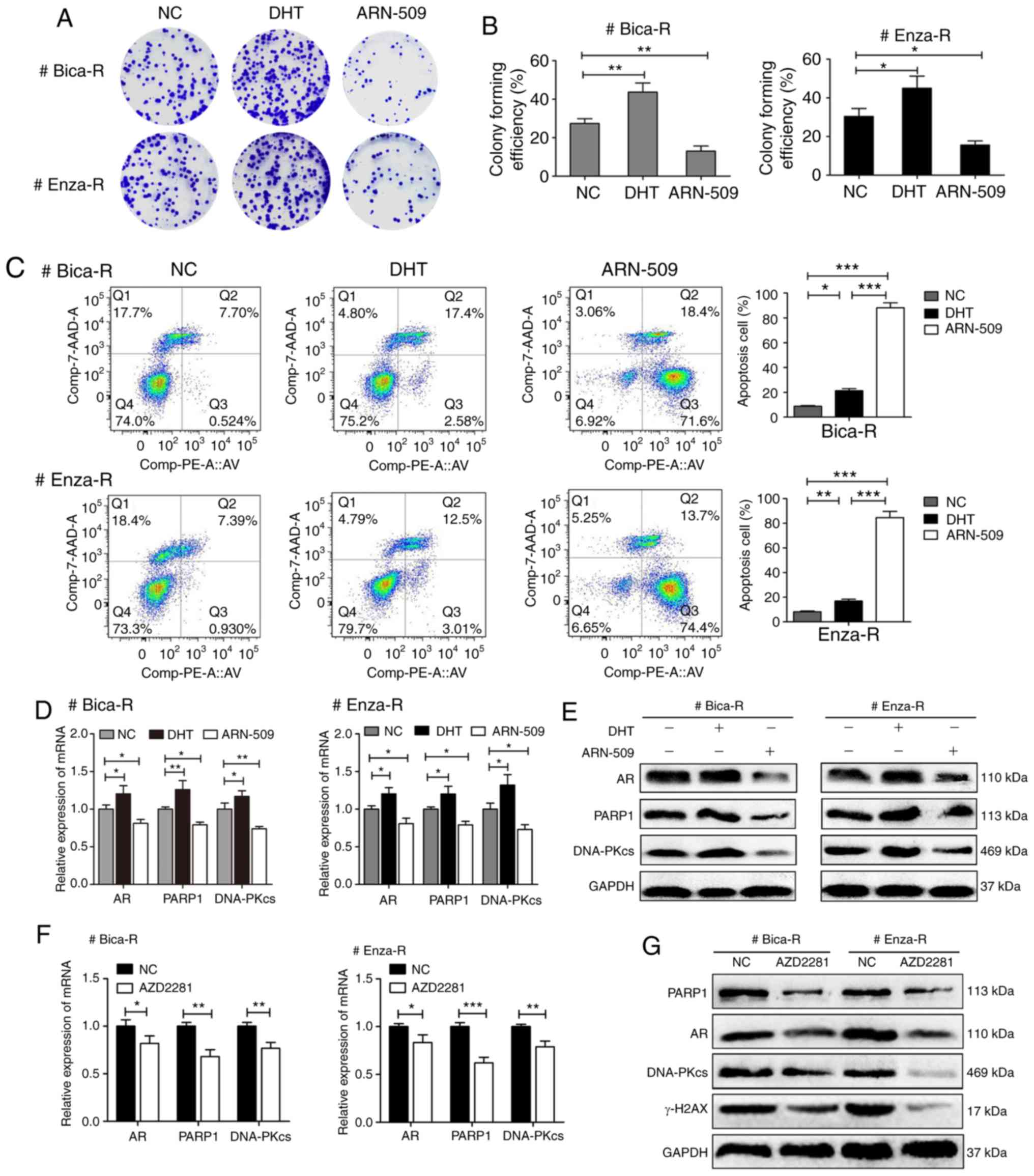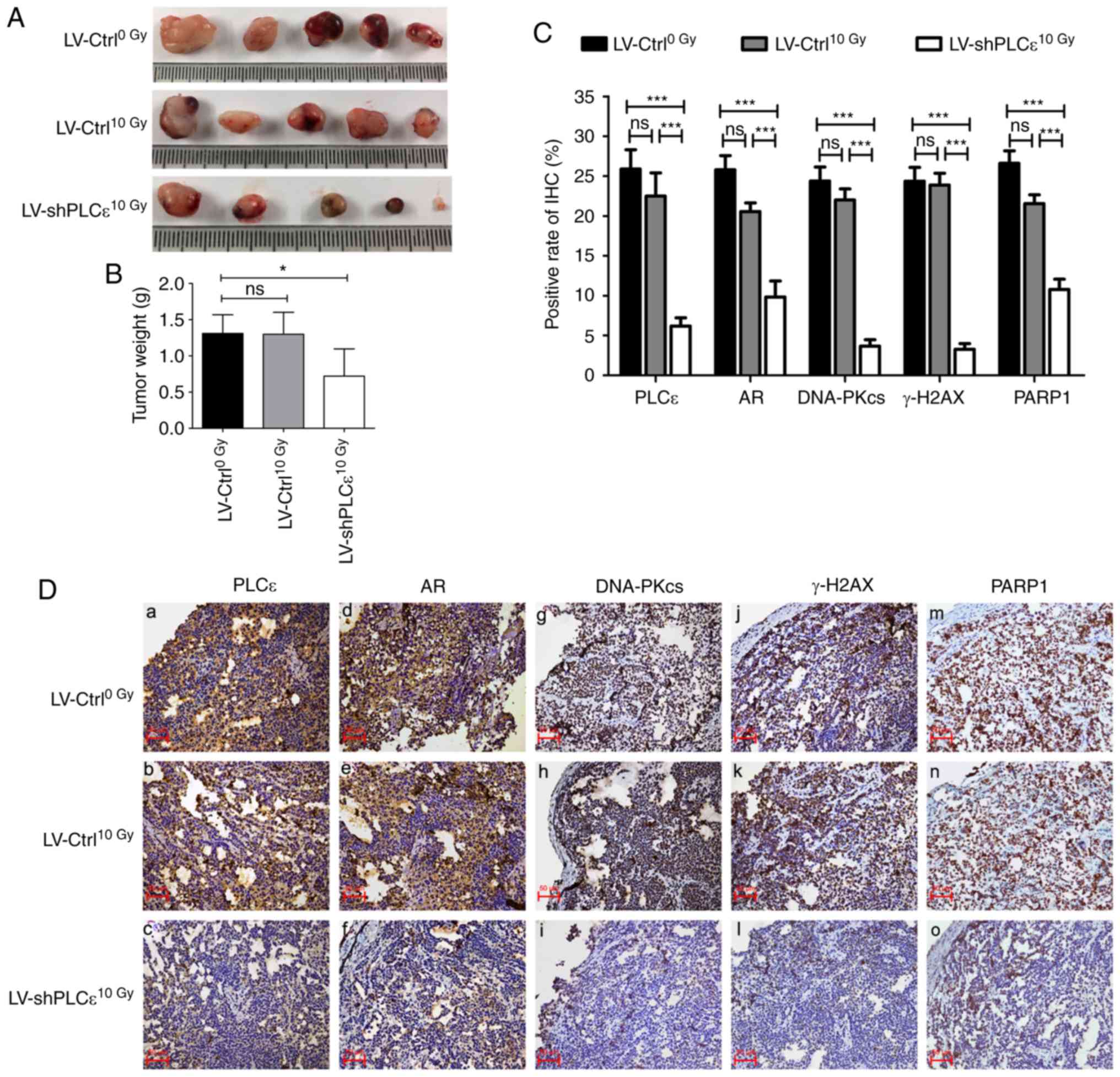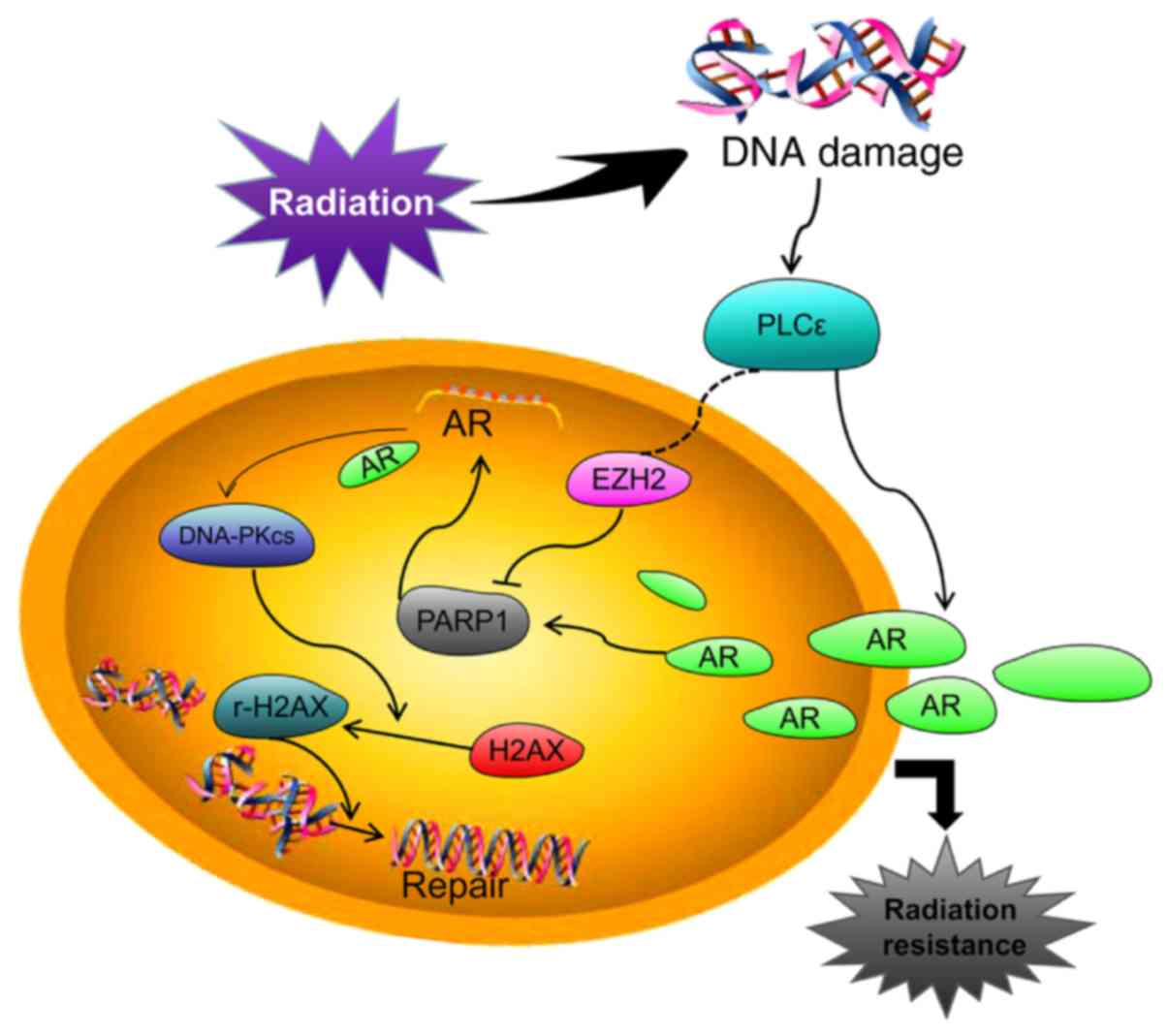|
1
|
Siegel RL, Miller KD and Jemal A: Cancer
statistics, 2015. CA Cancer J Clin. 65:5–29. 2015. View Article : Google Scholar : PubMed/NCBI
|
|
2
|
Hanahan D and Weinberg RA: Hallmarks of
cancer: The next generation. Cell. 144:646–674. 2011. View Article : Google Scholar : PubMed/NCBI
|
|
3
|
Hayden AJ, Catton C and Pickles T:
Radiation therapy in prostate cancer: A risk-adapted strategy. Curr
Oncol. 2 (Suppl 17):S18–S24. 2010.
|
|
4
|
Paller CJ and Antonarakis ES: Management
of biochemically recurrent prostate cancer after local therapy:
Evolving standards of care and new directions. Clin Adv Hematol
Oncol. 11:14–23. 2013.PubMed/NCBI
|
|
5
|
Smrcka AV, Brown JH and Holz GG: Role of
phospholipase Cε in physiological phosphoinositide signaling
networks. Cell Signal. 24:1333–1343. 2012. View Article : Google Scholar : PubMed/NCBI
|
|
6
|
Bunney TD and Katan M: PLC regulation:
Emerging pictures for molecular mechanisms. Trends Biochem Sci.
36:88–96. 2011. View Article : Google Scholar : PubMed/NCBI
|
|
7
|
Zhou RM, Li Y, Wang N, Liu BC, Chen ZF and
Zuo LF: PLC-ε1 Gene polymorphisms significantly enhance the risk of
esophageal squamous cell carcinoma in individuals with a family
history of upper gastrointestinal cancers. Arch Med Res.
43:578–584. 2012. View Article : Google Scholar : PubMed/NCBI
|
|
8
|
Bunney TD, Baxendale RW and Katan M:
Regulatory links between PLC enzymes and ras superfamily GTPases:
Signalling via PLCepsilon. Adv Enzyme Regul. 49:54–58. 2009.
View Article : Google Scholar : PubMed/NCBI
|
|
9
|
Wang LD, Zhou FY, Li XM, Sun LD, Song X,
Jin Y, Li JM, Kong GQ, Qi H, Cui J, et al: Genome-wide association
study of esophageal squamous cell carcinoma in Chinese subjects
identifies susceptibility loci at PLCE1 and C20orf54. Nat Genet.
42:759–763. 2010. View
Article : Google Scholar : PubMed/NCBI
|
|
10
|
Wang Y, Wu X, Ou L, Yang X, Wang X, Tang
M, Chen E and Luo C: PLCε knockdown inhibits prostate cancer cell
proliferation via suppression of Notch signalling and nuclear
translocation of the androgen receptor. Cancer Lett. 362:61–69.
2015. View Article : Google Scholar : PubMed/NCBI
|
|
11
|
Li L, Du Z, Gao Y, Tang Y, Fan Y, Sun W,
Li T, Liu N, Yuan M, Fan J, et al: PLCε knockdown overcomes drug
resistance to androgen receptor antagonist in castration-resistant
prostate cancer by suppressing the wnt3a/β-catenin pathway. J Cell
Physiol. 234:15472–15486. 2019. View Article : Google Scholar
|
|
12
|
Fan J, Fan Y, Wang X, Niu L, Duan L, Yang
J, Li L, Gao Y, Wu X and Luo C: PLCε regulates prostate cancer
mitochondrial oxidative metabolism and migration via upregulation
of Twist1. J Exp Clin Cancer Res. 38:3372019. View Article : Google Scholar : PubMed/NCBI
|
|
13
|
Culig Z and Santer FR: Androgen receptor
signaling in prostate cancer. Cancer Metastasis Rev. 33:413–427.
2014. View Article : Google Scholar : PubMed/NCBI
|
|
14
|
Coutinho I, Day TK, Tilley WD and Selth
LA: Androgen receptor signaling in castration-resistant prostate
cancer: A lesson in persistence. Endocr Relat Cancer. 23:T179–T197.
2016. View Article : Google Scholar : PubMed/NCBI
|
|
15
|
Chin Y, Clegg NJ and Scher HI:
Anti-androgens and androgen-depleting therapies in prostate cancer:
New agents for an established target. Lancet Oncol. 10:981–991.
2009. View Article : Google Scholar : PubMed/NCBI
|
|
16
|
Ta HQ and Gioeli D: The convergence of DNA
damage checkpoint pathways and androgen receptor signaling in
prostate cancer. Endocr Relat Cancer. 21:R395–R407. 2014.
View Article : Google Scholar : PubMed/NCBI
|
|
17
|
Goodwin JF, Schiewer MJ, Dean JL,
Schrecengost RS, de Leeuw R, Han S, Ma T, Den RB, Dicker AP, Feng
FY and Knudsen KE: A hormone-DNA repair circuit governs the
response to genotoxic insult. Cancer Discov. 3:1254–1271. 2013.
View Article : Google Scholar : PubMed/NCBI
|
|
18
|
Spratt DE, Evans MJ, Davis BJ, Doran MG,
Lee MX, Shah N, Wongvipat J, Carnazza KE, Klee GG, Polkinghorn W,
et al: Androgen receptor upregulation mediates radioresistance
after ionizing radiation. Cancer Res. 75:4688–4696. 2015.
View Article : Google Scholar : PubMed/NCBI
|
|
19
|
Zhang J: Poly (ADP-ribose) polymerase
inhibitor: An evolving paradigm in the treatment of prostate
cancer. Asian J Androl. 16:401–406. 2014. View Article : Google Scholar : PubMed/NCBI
|
|
20
|
Schiewer MJ, Goodwin JF, Han S, Brenner
JC, Augello MA, Dean JL, Liu F, Planck JL, Ravindranathan P,
Chinnaiyan AM, et al: Dual roles of PARP-1 promote cancer growth
and progression. Cancer Discov. 2:1134–1149. 2012. View Article : Google Scholar : PubMed/NCBI
|
|
21
|
Pu H, Horbinski C, Hensley PJ, Matuszak
EA, Atkinson T and Kyprianou N: PARP-1 regulates
epithelial-mesenchymal transition (EMT) in prostate tumorigenesis.
Carcinogenesis. 35:2592–2601. 2014. View Article : Google Scholar : PubMed/NCBI
|
|
22
|
EAU Guidelines. Edn. presented at the EAU
Annual Congress Barcelona 2019. ISBN 978-94-92671-04-2. EAU
Guidelines Office, Arnhem. 2019.
|
|
23
|
Hunt CR, Ramnarain D, Horikoshi N, Iyengar
P, Pandita RK, Shay JW and Pandita TK: Histone modifications and
DNA double-strand break repair after exposure to ionizing
radiations. Radiat Res. 179:383–392. 2013. View Article : Google Scholar : PubMed/NCBI
|
|
24
|
Davey RA and Grossmann M: Androgen
receptor structure, function and biology: From bench to bedside.
Clin Biochem Rev. 37:3–15. 2016.PubMed/NCBI
|
|
25
|
Friedlander TW and Ryan CJ: Targeting the
androgen receptor. Urol Clin North Am. 39:453–464. 2012. View Article : Google Scholar : PubMed/NCBI
|
|
26
|
Jones CU, Hunt D, Mcgowan DG, Amin MB,
Chetner MP, Bruner DW, Leibenhaut MH, Husain SM, Rotman M, Souhami
L, et al: Radiotherapy and short-term androgen deprivation for
localized prostate cancer. N Engl J Med. 365:107–118. 2011.
View Article : Google Scholar : PubMed/NCBI
|
|
27
|
Roach M III, Bae K, Speight J, Wolkov HB,
Rubin P, Lee RJ, Lawton C, Valicenti R, Grignon D and Pilepich MV:
Short-term neoadjuvant androgen deprivation therapy and
external-beam radiotherapy for locally advanced prostate cancer:
Long-term results of RTOG 8610. J Clin Oncol. 26:585–591. 2008.
View Article : Google Scholar : PubMed/NCBI
|
|
28
|
Bolla M, Van Tienhoven G, Warde P, Dubois
JB, Mirimanoff RO, Storme G, Bernier J, Kuten A, Sternberg C,
Billiet I, et al: External irradiation with or without long-term
androgen suppression for prostate cancer with high metastatic risk:
10-year results of an EORTC randomised study. Lancet Oncol.
11:1066–1073. 2010. View Article : Google Scholar : PubMed/NCBI
|
|
29
|
Pignot G, Maillet D, Gross E, Barthelemy
P, Beauval JB, Constans-Schlurmann F, Loriot Y, Ploussard G, Sargos
P, Timsit MO, et al: Systemic treatments for high-risk localized
prostate cancer. Nat Rev Urol. 15:498–510. 2018. View Article : Google Scholar : PubMed/NCBI
|
|
30
|
Polkinghorn WR, Parker JS, Lee MX, Kass
EM, Spratt DE, Iaquinta PJ, Arora VK, Yen WF, Cai L, Zheng D, et
al: Androgen receptor signaling regulates DNA repair in prostate
cancers. Cancer Discov. 3:1245–1253. 2013. View Article : Google Scholar : PubMed/NCBI
|
|
31
|
Bunney TD and Katan M: Phospholipase C
epsilon: Linking second messengers and small GTPases. Trends Cell
Biol. 16:640–648. 2006. View Article : Google Scholar : PubMed/NCBI
|
|
32
|
Ou L, Guo Y, Luo C, Wu X, Zhao Y and Cai
X: RNA interference suppressing PLCE1 gene expression decreases
invasive power of human bladder cancer T24 cell line. Cancer Genet
Cytogenet. 200:110–119. 2010. View Article : Google Scholar : PubMed/NCBI
|
|
33
|
Du HF, Ou LP, Yang X, Song XD, Fan YR, Tan
B, Luo CL and Wu XH: A new PKCα/β/TBX3/E-cadherin pathway is
involved in PLCε-regulated invasion and migration in human bladder
cancer cells. Cell Signal. 26:580–593. 2014. View Article : Google Scholar : PubMed/NCBI
|
|
34
|
Cheng H, Luo C, Wu X, Zhang Y, He Y, Wu Q,
Xia Y and Zhang J: shRNA targeting PLCε inhibits bladder cancer
cell growth in vitro and in vivo. Urology. 78:474.e7–11. 2011.
View Article : Google Scholar
|
|
35
|
Ma H, Wang LE, Liu Z, Sturgis EM and Wei
Q: Association between novel PLCE1 variants identified in published
esophageal cancer genome-wide association studies and risk of
squamous cell carcinoma of the head and neck. BMC Cancer.
11:2582011. View Article : Google Scholar : PubMed/NCBI
|
|
36
|
Li M, Edamatsu H, Kitazawa R, Kitazawa S
and Kataoka T: Phospholipase cepsilon promotes intestinal
tumorigenesis of Apc(Min/+) mice through augmentation of
inflammation and angiogenesis. Carcinogenesis. 30:1424–1432. 2009.
View Article : Google Scholar : PubMed/NCBI
|
|
37
|
Abnet CC, Freedman ND, Hu N, Wang Z, Yu K,
Shu XO, Yuan JM, Zheng W, Dawsey SM, Dong LM, et al: A shared
susceptibility locus in PLCE1 at 10q23 for gastric adenocarcinoma
and esophageal squamous cell carcinoma. Nat Genet. 42:764–767.
2010. View
Article : Google Scholar : PubMed/NCBI
|
|
38
|
Luo J, Jin J, Yang F, Sun Z, Zhang W, Shi
Y, Xu J and Guan X: The correlation between PARP1 and BRCA1 in AR
positive triple-negative breast cancer. Int J Biol Sci.
12:1500–1510. 2016. View Article : Google Scholar : PubMed/NCBI
|
|
39
|
Ray Chaudhuri A and Nussenzweig A: The
multifaceted roles of PARP1 in DNA repair and chromatin
remodelling. Nat Rev Mol Cell Biol. 18:610–621. 2017. View Article : Google Scholar : PubMed/NCBI
|
|
40
|
Tessarz P and Kouzarides T: Histone core
modifications regulating nucleosome structure and dynamics. Nat Rev
Mol Cell Biol. 15:703–708. 2014. View Article : Google Scholar : PubMed/NCBI
|
|
41
|
Gan ES, Xu Y and Ito T: Dynamics of
H3K27me3 methylation and demethylation in plant development. Plant
Signal Behav. 10:e10278512015. View Article : Google Scholar : PubMed/NCBI
|
|
42
|
Mentzel T and Kiss K: Reduced H3K27me3
expression in radiation-associated angiosarcoma of the breast.
Virchows Arch. 472:361–368. 2018. View Article : Google Scholar : PubMed/NCBI
|
|
43
|
Prieto-Granada CN, Wiesner T, Messina JL,
Jungbluth AA, Chi P and Antonescu CR: Loss of H3K27me3 expression
is a highly sensitive marker for sporadic and radiation-induced
MPNST. Am J Surg Pathol. 40:479–489. 2016. View Article : Google Scholar : PubMed/NCBI
|















